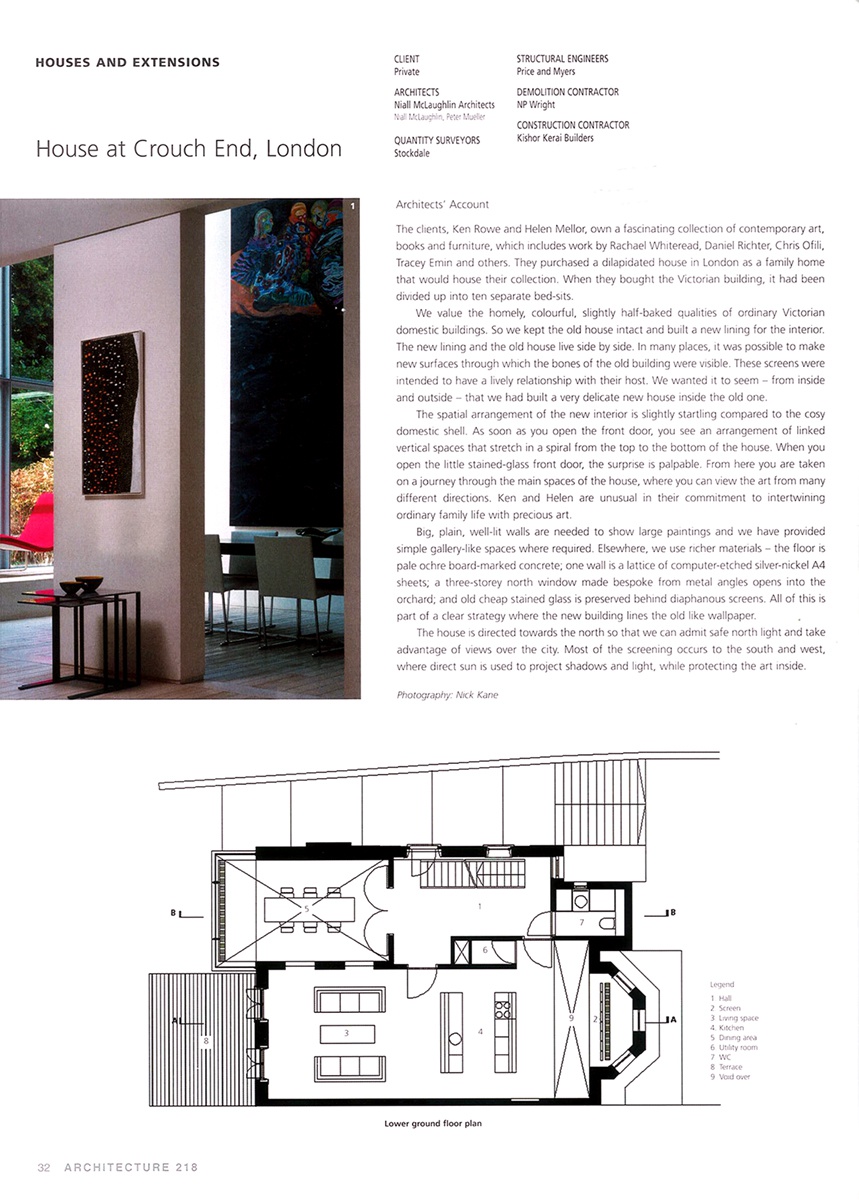House at Crouch End, London - Architecture Ireland
Issue 218
June 2006
Text Níall McLaughlin Architects
Images Nick Kane
The clients, Ken Rowe and Helen Mellor, own a fascinating collection of contemporary art, books and furniture, which includes work by Rachael Whiteread, Daniel Richter, Chris Ofili, Tracey Emin and others. They purchased a dilapidated house in London as a family home that would house their collection. When they bought the Victorian building, it had been divided up into ten separate bed-sits.
We value the homely, colourful, slightly half-baked qualities of ordinary Victorian domestic buildings. So we kept the old house intact and built a new lining for the interior. The new lining and the old house live side by side. In many places, it was possible to make new surfaces through which the bones of the old building were visible. These screens were intended to have a lively relationship with their host. We wanted it to seem – from inside and outside – that we had built a very delicate new house inside the old one.
The spatial arrangement of the new interior is slightly startling compared to the cosy domestic shell. As soon as you open the front door, you see an arrangement of linked vertical spaces that stretch in a spiral from the top to the bottom of the house. When you open the little stained-glass front door, the surprise is palpable. From here you are taken on a journey through the main spaces of the house, where you can view the art from many different directions. Ken and Helen are unusual in their commitment to intertwining ordinary family life with precious art.
Big, plain, well-lit walls are needed to show large paintings and we have provided simple gallery-like spaces where required. Elsewhere, we use richer materials – the floor is pale ochre board-marked concrete; one wall is a lattice of computer-etched silver-nickel A4 sheets; a three-storey north window made bespoke from metal angles opens into the orchard; and old cheap stained glass is preserved behind diaphanous screens. All of this is part of a clear strategy where the new building lines the old like wallpaper.
The house is directed towards the north so that we can admit safe north light and take advantage of views over the city. Most of the screening occurs to the south and west, where direct sun is used to project shadows and light, while protecting the art inside.
